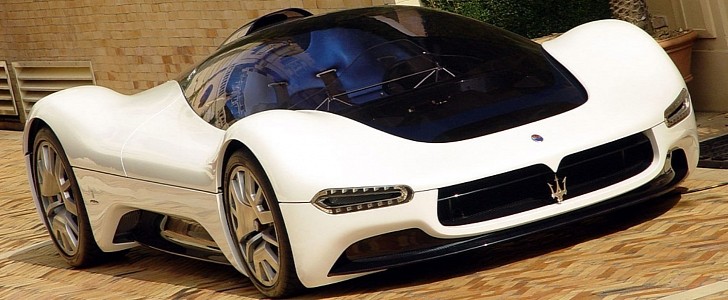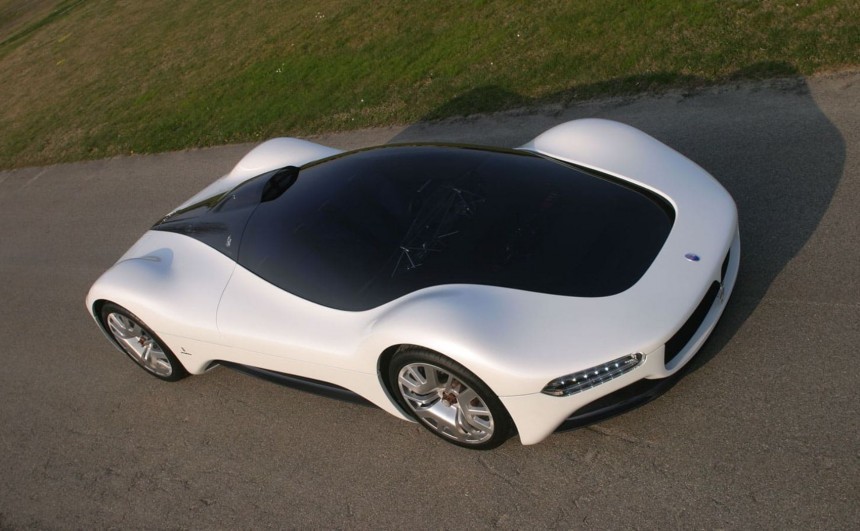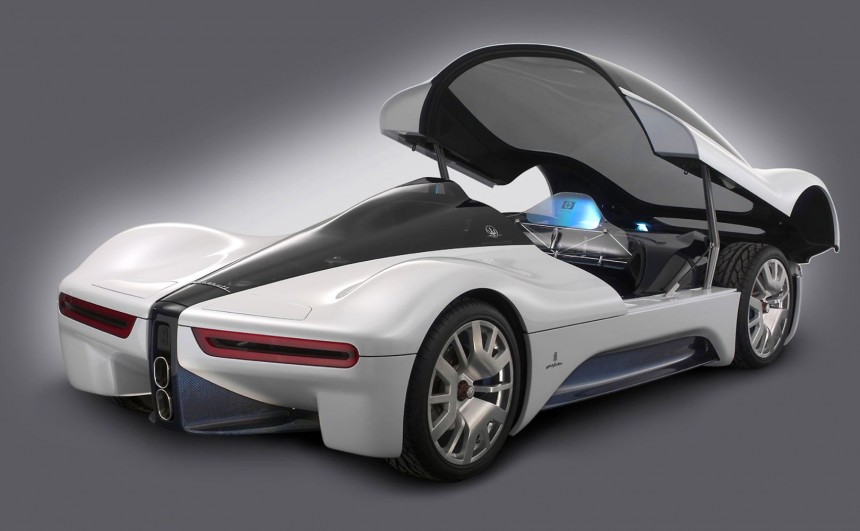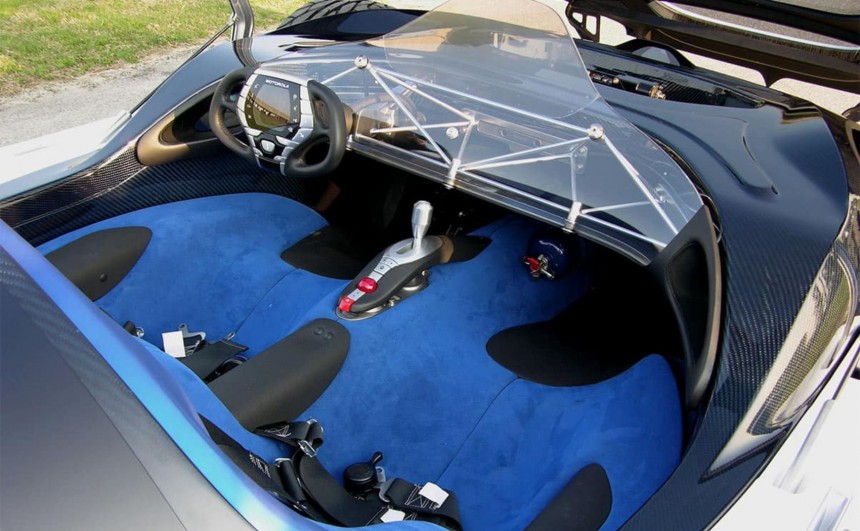At the 2005 Geneva Motor Show, Pininfarina took the wraps off the most stunning vehicle showcased at the event. Built in collaboration with Maserati and Motorola to celebrate the company’s 75th anniversary, the futuristic vehicle never made it into series production but remains one of the most daring concepts of the 21st century.
Founded by Italian designer and builder Battista "Pinin" Farina in 1930, the company started out by building bodies for the likes of Lancia, Alfa Romeo, Isotta Fraschini, Hispano-Suiza, Fiat, Cadillac, or Rolls-Royce. It was the first coachbuilder to employ a new manufacturing technique that became known as unibody construction.
After World War II, a period that almost led to its demise, Pininfarina rose from the ashes and started a long-lasting partnership with Ferrari that shaped some of the most legendary sports cars that came out of Maranello, like the 288 GTO, Testarossa, F40, F50, or Enzo.
In 2004, as the company was preparing to celebrate 75 years of existence, a design team overseen by Ken Okuyama - the man behind the first-gen Honda NSX and several Ferraris, including the Enzo - was tasked with creating a spectacular working prototype for the upcoming Geneva Motor Show.
The basis car chosen for this project was the Maserati MC12 GT1, a race car that was built to return the Trident to motorsport after nearly four decades of absence and would go on to win the 2005 FIA GT manufacturers title.
Engineers started out with the race-spec carbon fiber honeycomb monocoque chassis that was modified to make room for the futuristic, free-flowing bodywork, and high-tech interior. Using complex 3D renderings and working feverishly, the team managed to complete the stunning concept in just two months.
They chose the Birdcage moniker as a tribute to the highly successful series of Maserati race cars from the 1960s. They utilized an incredibly complex spaceframe chassis built using a mind-boggling number of steel tubes that resembled birdcages.
The front fascia was dominated by a huge intake grille that allowed plenty of fresh air to make its way to the radiator. Conventional headlights were replaced by slim LEDs developed by OSRAM. which were cooled using integrated aluminum air ducts .
The same innovative design was used for the rear end where the thin taillights also included ducts, but these were used to disperse hot air from the engine bay. Mounted above the taillights were two active spoilers that could extend automatically to increase downforce.
However, as impressive as these elements were, the most jaw-dropping feature was a teardrop-shaped Perspex canopy that ran almost the entire length of the gorgeous car, revealing the interior, parts of the chassis, and giving drivers a better view of the road ahead. Moreover, instead of using doors, the canopy along with a large portion of the front end could be lifted spaceship-style to allow occupants to enter.
The interior, which was designed with help from Motorola, included two blue suede upholstered seats that were integrated into the monocoque. Although the steering wheel’s shape was inspired by those found on Formula 1 cars, the central part that housed most of the controls and a LED display looked more like a big mobile phone of the era. The most spectacular part of the cabin was the jetfighter-like head-up display that projected information onto a huge clear panel supported by exposed beams.
Behind the seats, engineers fitted the M144B/2 naturally-aspirated 6.0-liter V12 powerplant developed for the MC12 GT1. Part of the Ferrari and Maserati F150 engine family that debuted on the Enzo, the unit’s air restrictors were removed, so its output was boosted to 700 hp (522 kW). It was linked to the six-speed automated manual transmission taken from the road-legal MC12.
When it was finally revealed, the public at the Geneva Motor Show was stunned. The Birdcage 75th was by far the most spectacular vehicle unveiled at the event, and a few days later it was given the Best Concept award by the event’s organizers.
After Geneva, it added the Automobila Magazine’s The Most Beautiful Car in the World (2005) and Louis Vuitton’s Classic Concept (2006) awards to its list of accolades.
Today, the Maserati Birdcage 75th is regarded by many as one of the most stunning concept cars to come out of Italy and a Pininfarina masterpiece. It resides in Turin, Italy, where it can be seen by anyone visiting the coachbuilder’s museum.
After World War II, a period that almost led to its demise, Pininfarina rose from the ashes and started a long-lasting partnership with Ferrari that shaped some of the most legendary sports cars that came out of Maranello, like the 288 GTO, Testarossa, F40, F50, or Enzo.
In 2004, as the company was preparing to celebrate 75 years of existence, a design team overseen by Ken Okuyama - the man behind the first-gen Honda NSX and several Ferraris, including the Enzo - was tasked with creating a spectacular working prototype for the upcoming Geneva Motor Show.
The basis car chosen for this project was the Maserati MC12 GT1, a race car that was built to return the Trident to motorsport after nearly four decades of absence and would go on to win the 2005 FIA GT manufacturers title.
They chose the Birdcage moniker as a tribute to the highly successful series of Maserati race cars from the 1960s. They utilized an incredibly complex spaceframe chassis built using a mind-boggling number of steel tubes that resembled birdcages.
The front fascia was dominated by a huge intake grille that allowed plenty of fresh air to make its way to the radiator. Conventional headlights were replaced by slim LEDs developed by OSRAM. which were cooled using integrated aluminum air ducts .
However, as impressive as these elements were, the most jaw-dropping feature was a teardrop-shaped Perspex canopy that ran almost the entire length of the gorgeous car, revealing the interior, parts of the chassis, and giving drivers a better view of the road ahead. Moreover, instead of using doors, the canopy along with a large portion of the front end could be lifted spaceship-style to allow occupants to enter.
The interior, which was designed with help from Motorola, included two blue suede upholstered seats that were integrated into the monocoque. Although the steering wheel’s shape was inspired by those found on Formula 1 cars, the central part that housed most of the controls and a LED display looked more like a big mobile phone of the era. The most spectacular part of the cabin was the jetfighter-like head-up display that projected information onto a huge clear panel supported by exposed beams.
When it was finally revealed, the public at the Geneva Motor Show was stunned. The Birdcage 75th was by far the most spectacular vehicle unveiled at the event, and a few days later it was given the Best Concept award by the event’s organizers.
After Geneva, it added the Automobila Magazine’s The Most Beautiful Car in the World (2005) and Louis Vuitton’s Classic Concept (2006) awards to its list of accolades.
Today, the Maserati Birdcage 75th is regarded by many as one of the most stunning concept cars to come out of Italy and a Pininfarina masterpiece. It resides in Turin, Italy, where it can be seen by anyone visiting the coachbuilder’s museum.
















